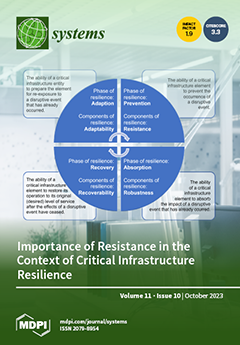The quantitative evaluation of the coupling coordination degree (CCD) between the regional economy and eco-environment systems is of great importance for the realization of sustainable development goals, which could identify economic or eco-environmental cold areas. To date, traditional evaluation frameworks mainly include the
[...] Read more.
The quantitative evaluation of the coupling coordination degree (CCD) between the regional economy and eco-environment systems is of great importance for the realization of sustainable development goals, which could identify economic or eco-environmental cold areas. To date, traditional evaluation frameworks mainly include the indicator system construction based on statistical data, which seldom utilize the geo-spatiotemporal datasets. Hence, this study aimed to evaluate the CCD change trend of the Yangtze River Delta (YRD) and explore the relationship between the CCD, economy, and eco-environment on the county scale. In this study, YRD was selected as the study area to evaluate its level of CCD at different periods, and then the nighttime difference index (NTDI) and eco-environmental comprehensive evaluation index (ECEI) were calculated to represent the difference in the development of the regional economy and the eco-environmental quality (EEQ). The CCD between the two systems was then calculated and analyzed using global, local, and Geary’s C spatial autocorrelation indicators, in addition to change trend methods. The main findings showed that: (1) During the period 2000–2020, the economic system in YRD showed a continuously upward trend (0.0487 a
−1), with average NTDI values of 0.2308, 0.2964, 0.3223, 0.3971, and 0.4239, respectively. In spatial terms, the economy system showed a distribution of “high in the east and low in the west”. (2) YRD’s EEQ indicated a gradual upward trend (from 0.3590 in 2000 to 0.3970 in 2020), with a change trend value of 0.0020 a
−1. Spatially, the regions with high ECEI were mainly located in southwestern counties. (3) In the past 20 years, the CCD between economic and eco-environment systems showed an increased change trend, with a change trend value of 0.0302 a
−1. The average CCD values for the five periods were 0.3992, 0.4745, 0.4633, 0.5012, and 0.5369. The overall level of CCD improved from “moderate incoordination” to “low coordination”. (4) Both NTDI and ECEI indexes have a positive effect on the improvement of regional CCD. However, the contribution of NTDI is a little higher than that of ECEI.
Full article





